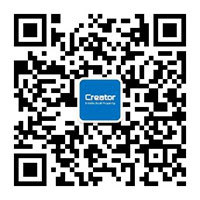17
2025-11
CNIPA: Newly Amended Patent Examination Guidelines 2026
The China National Intellectual Property Administration (CNIPA) has amended the Patent Examination Guidelines through Order No. 84, approved on September 18, 2025. The amendments aim to improve patent quality and examination efficiency, address emerging technologies, and refine examination rules. The revised Guidelines will take effect on January 1, 2026, introducing important updates to inventorship requirements, divisional practice, same-day double filings, inventiveness assessment, AI-related inventions, bitstream-related subject matter, priority assignment, invalidation procedures, and fee refunds.
1. Inventorship
-
The Guidelines reaffirm that an inventor must be a natural person.
2. Divisional Applications and Priority
- Failure to declare priority in a divisional application results in loss of priority rights.
3. Same-Day Filing of Utility Model and Invention Patent
When the same applicant files, on the same filing date, both a utility model (UM) and an invention patent for the same subject matter:
-
The applicant must state in each application that another application has been filed for the same invention or creation.
-
If no rejection grounds are found during examination of the invention application, the applicant must—within the prescribed time limit—declare that the UM patent right is relinquished.
-
Double patenting cannot be avoided by amending the claims of the invention application.
4. Inventiveness: Features That Do Not Contribute to Solving the Technical Problem
-
Features that do not contribute to solving the technical problem—even if included in the claims—generally do not support inventiveness.
Example: For an invention aimed at achieving more flexible shutter control in a camera by improving internal mechanical and circuit structures, adding features such as the housing shape, display size, or battery-compartment position does not address the relevant technical problem. These features are conventional or readily obtained by a skilled person, and their addition does not enhance inventiveness.
5. AI-Related Invention: Patentable Subject Matter and Inventiveness
5.1 Patentability Restrictions
-
For inventions containing algorithmic features or business rules, if data acquisition, labeling, rule setting, recommendation decisions, or similar steps involve content that violates laws, public morality, or public interest, the invention is unpatentable under Article 5(1) of the Patent Law.
-
Two negative subject-matter cases are provided:
-
Example 1: A Mattress sales assistance system in shopping malls that infringes on personal privacy and violates public interest.
-
Example 2: An emergency decision-making model for autonomous vehicles that selects whom to protect or strike based on a pedestrian's gender and age, which violates the ethical principle that all lives are equal.
-
5.2 Inventiveness Evaluation
-
One positive and one negative example illustrate inventiveness assessment:
-
Example 18: Ship quantity recognition (positive)
-
Example 19: Scrap steel grading (negative)
-
5.3 Disclosure Requirements
-
For inventions involving AI model construction or training, the specification must clearly describe:
-
required modules, layers, or connections,
-
essential training steps, parameters, and other necessary information.
-
-
For inventions applying AI models or algorithms in specific fields or scenarios, the specification must clearly describe:
-
how the model/algorithm integrates with the specific field or scenario,
-
how input/output data is set to reflect the internal correlation.
-
-
Two examples are provided:
-
Example 20: Facial feature generation (positive)
-
Example 21: Cancer prediction (negative)
-
6. Bitstream-Related Inventions
6.1 Unpatentable Subject Matter
-
A claim directed solely to a pure bitstream, or limited only by features that define a pure bitstream, is deemed to fall under Article 25(1)(2) as rules and methods for mental activities and is not patent-eligible.
6.2 Patent-Eligible Subject Matter
-
If a specific video-encoding method that generates the bitstream constitutes a technical solution under Article 2(2), then:
-
a method of storing or transmitting the bitstream defined by that encoding method, and
-
a computer-readable storage medium storing the bitstream,
may optimize storage or transmission resources and thus constitute patent-eligible technical solutions.
-
7. Priority Assignment Documentation
-
Proof of priority assignment must be signed or stamped by all applicants of the earlier application.
8. Invalidation Requests
-
If an invalidation request is not a true expression of the Petitioner's intent, the request shall not be accepted.
9. Additional Fees for Specifications
-
Additional fees for specifications apply when the total number of pages of the specification (including drawings and sequence listings) exceeds 30 pages.
-
Properly formatted machine-readable sequence listings are not counted as pages.
10. Refunds
-
Applicants may request a refund of substantive examination fees if, before the notice of entry into substantive examination is issued:
-
the application is deemed withdrawn,
-
the divisional application is deemed not filed, or
-
the withdrawal request of the application has been approved.
-
-
Applicants may also request a refund of annual fees paid after the decision announcing termination or complete invalidation of a patent right.
-
Where a restoration request is filed but the CNIPA later decides not to restore the right, the requester may request a refund of the restoration fee and related fees.
undefined





